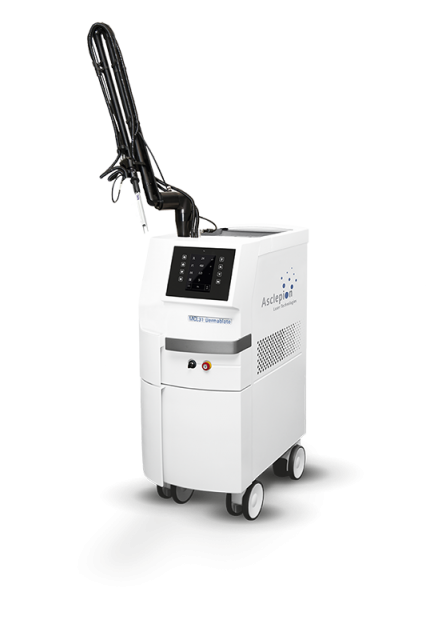
Ablative lasers: the gold standard for dermatological treatments
The ablative lasers are the “gold standard” of lasers for dermatological treatments. They ablate the skin with a degree of precision that can be measured in microns. This makes it possible to safely and gently remove a wide variety of lesions from the skin at epidermis and dermis level. Due to their ease of absorption in water, both the Erbium:YAG (2,940 nm) and the CO2 (10,600 nm) wavelengths are highly suitable for this purpose.
The skin is disinfected before the treatment is carried out. Then, depending on the size and/or depth of the lesion to be dealt with, the dermatologist decides whether anesthesia is required and what type of anesthesia is appropriate (most of the treatments are very well tolerated without any anesthesia!).
Gentle and effective treatments
Treatments using lasers are gentle on the skin and eliminate bothersome skin lesions very effectively and in a matter of minutes. The Erbium laser works very precisely and can selectively remove skin areas to a predefined depth with little pain. At the same time it stimulates skin renewal. The results are impressive: tangibly smoother, softer skin.
After treatment, it normally only takes a few days for the wound to heal. It is recommended not to expose the treated area to sunlight or sunbeds for at least 10/15 days prior to/following treatment. The use of sunscreen is recommended in summertime and in general when treating areas exposed to sunlight (e.g. the face).
Studies show that the Erbium laser is also very effective in treating scars, for example acne scars, and for skin rejuvenation. The success results from the highly precise removal of tissue during treatment, softening and smoothing of tissue during wound healing and collagen neogenesis during the first year post-op.










